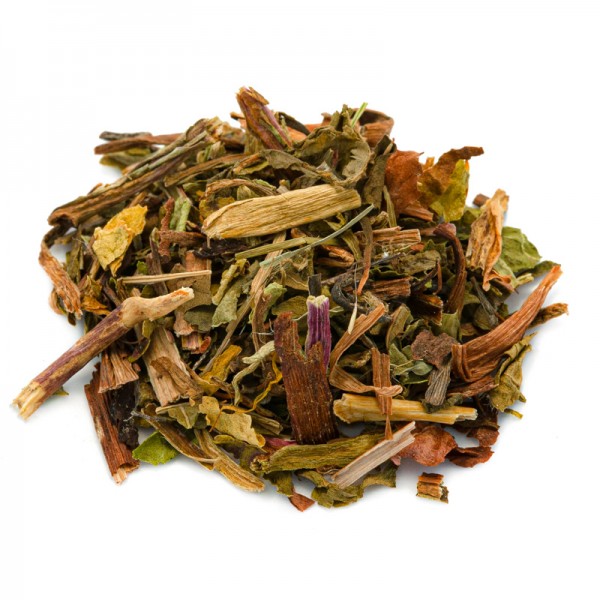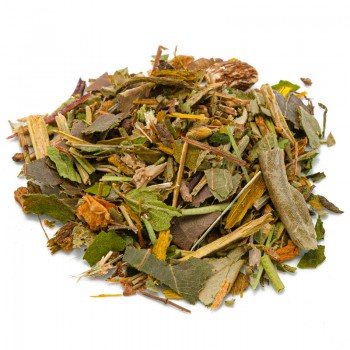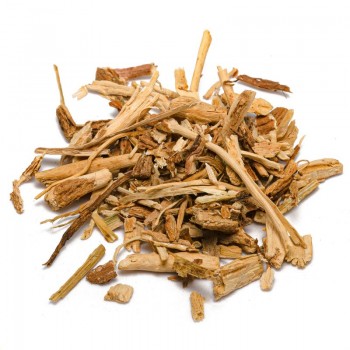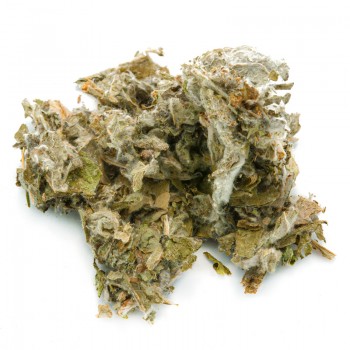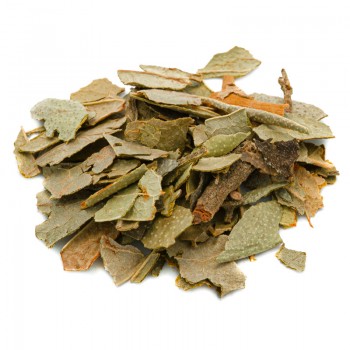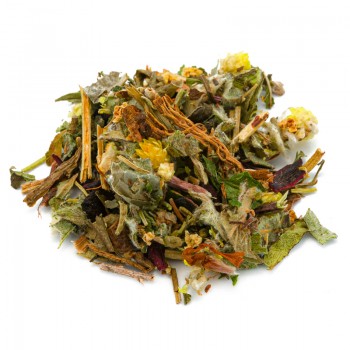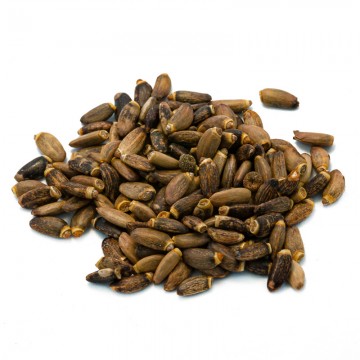Dandelion, also called Dandelion or Dandelion , is a plant whose leaves are used in herbal medicine, for their purifying and diuretic properties.
The leaves often represent in herbal teas a natural remedy for the well-being of the liver, to support the management of blood sugars, protect the skin and the heart.
Dandelion leaves: properties and benefits
With its detoxifying action, it stimulates the correct activity of the liver and kidneys, favoring the elimination of waste and toxins from the body.
Protects the liver by helping to reduce the levels of excess fat stored in the liver, and with a beneficial action thanks to the antioxidants contained in the plant.
The detoxifying activity of dandelion also benefits the skin, which is brighter.
The purifying activity on the liver also promotes the reduction of excess cholesterol - a cardiovascular risk factor. The infusion of dandelion leaves can help the body reduce total cholesterol and triglyceride levels, in combination with a healthy diet. In addition to being a medicinal herb useful for purifying the kidneys and liver, dandelion is known as an agent against indigestion (dyspepsia) and to stimulate appetite.
It has often been used as a herbal remedy to treat constipation and improve digestive health.
The diuretic effect of dandelion leaves in herbal tea is also useful in case of water retention and cellulite, thanks to the draining action. A stimulus for diuresis is also advantageous in cases of hypertension: freeing the body of excess fluids, it helps to reduce blood pressure levels
Additionally, dandelion contains potassium, a mineral associated with decreasing blood pressure in those with previously high levels.
The infusion of leaves is also a valid herbal remedy in case of rheumatism, given the action of some polyphenols, which can help to counteract inflammation and painful symptoms. < / p>
Always at the metabolic level, dandelion has good levels of chicoric and chlorogenic acid , they are two bioactive compounds that can help reduce sugar levels in the blood.
By acting on glucose metabolism, they stimulate the secretion of insulin, the hormone that regulates blood sugar levels. In addition, they improve the absorption of glucose in the muscles.
This is a process that leads to better insulin sensitivity and lower blood sugar levels.
In addition to these properties, dandelion leaves contain nutrients useful for our well-being, being rich in calcium and vitamins, A, B, and C.
They are also rich in antioxidants polyphenols and beta carotene, useful for neutralizing harmful free radicals and preventing the damage of aging.
Dandelion has also historically been used for external use, to protect against skin damage caused by sunlight, reduce skin irritation and moisturize.
Origins and History of cultivation
The so-called dandelion has been used in traditional medicine for centuries, as well as in cooking, although it has often been considered a weed.
Taraxacum officinale is the best known and most used type, although there are many other species. It is also called a dandelion, referring to the leaves of the dandelion which are serrated and resemble teeth.
Botanically originated in Europe and Asia, where it was also cultivated as well as appearing as a wild plant - both as a medicinal plant and as a tasty and nutritious vegetable.
All parts of the plant were eaten, as the leaves, root and flowers were edible. The dandelion leaves can be eaten as a salad or steamed, while the flowers are used to make dandelion wine, and the roots are boiled and infused. Roasted roots can make a coffee substitute.
It is thought that it was cultivated since Roman times, while in more recent centuries, dandelion has been used as a remedy in folk medicine for malatties such as liver problems, gastrointestinal disorders, water retention and skin disorders.
A famous mention of dandelion as a medicine is found in the works of Arab doctors of the 10th-11th century, who refer to it as Taraxca with a kind of wild endive.
Another reference is found among the Welsh medicines of the thirteenth century, and from the Middle Ages onwards, it has always been appreciated, for the properties of all the useful parts.
The plant is widely cultivated in India, where it is also found in the Himalayas, as a remedy for liver ailments, as well as being used for salads.
During the seventeenth century, dandelion was exported to the Americas, where it also became known as food and herbal medicine there.
Today as a very common plant, dandelion grows wild almost everywhere.
Plant and flowers
The Dandelion or dandelion is known botanically as Taraxacum officinale and is part of the Asteraceae family. It grows best in full sun, and on lived-in land such as yards, flower beds, gardens and lawns.
The typical wild dandelion shows a rosette of toothed leaves that originate from a central growth point at ground level. From this crown the buds emerge, on the stems about 50 cm high. The yellow-gold flowers will transform into the characteristic shape.
The average size of dandelion plants can reach around 70 cm in height, if the growing conditions permit.
European dandelion cultivars show large leaves, as these selections are used as cutting grass.
Nutritional values of Dandelion - leaves
From a nutritional point of view, the dandelion is of considerable value. Contains several vitamins (A, C, K), and good mineral levels (calcium, phosphorus, iron, magnesium) .
The leaves contain high levels of antioxidant beta carotene, which can protect against cell damage and oxidative stress
They are also rich in polyphenols and substances such as chicoric acid, chlorogenic acid , as well as other bioactive components such as sesquiterpene lactones, taraxasterol and taraxerol.
How to use Dandelion leaves in herbal tea
The infusion of dandelion is obtained by putting in a cup (250 ml), about 3-5 grams of leaves in herbal tea cut, with water at 100 ° C. Leave to infuse for 5 to 7 minutes, before drinking the purifying herbal tea.
Add honey or sugar if desired.
Dandelion: side effects and contraindications
Dandelion leaves are generally recognized as safe among liver cleansing teas. However, some health risks are associated especially in the case of diseases and in excessive doses.
Dandelion is contraindicated in case of gastritis, ulcer and can interact with diuretic drugs and therapies that cause hyperkalaemia (hyperkalaemia).
For this, it is advisable to consult a specialist in the case of chronic liver and kidney diseases, such as gallstones, or in case of regular intake of related medicines or lithium therapy. < / p>
The dandelion leaf can in any case cause side effects including stomach acid, abdominal pain, diarrhea, increased heart rate, excessive urination and increased potassium levels. < / p>
The dandelion tea is not recommended for children, pregnant and breastfeeding women.

